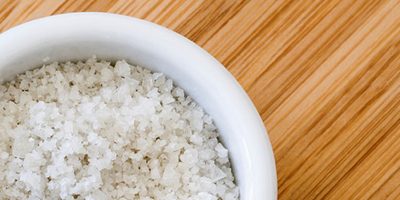
Salt overdose for city workers - fast food pushes salt consumption to unsafe levels
Results of a new survey show that many fast food meals contain far more salt than the government’s recommended daily maximum. Published today by the Australian Division of World Action on Salt and Health (AWASH) the survey reviewed salt levels in a range of foods sold by six major fast food chains (KFC, Hungry Jack’s, Oporto, Red Rooster, Subway and McDonald’s). Most products contained excessive quantities of salt.
The salt in meals from fast food chains is a major contributor to premature death and disability in Australia. Three quarters of the sandwiches and burgers surveyed contained more than half the maximum daily allowance of salt in a single serve. Government advice is that people should eat no more than 4 grams of salt a day with an upper maximum limit of 6 grams. One chicken and chips meal contained a shocking 7 grams of salt.
"There is an unacceptable level of salt in popular fast foods. Companies have responded well to government pressure to rid food of problem fats but salt levels remain very high. Urgent action is required to reduce salt in these foods," says AWASH Chair, Professor Bruce Neal.
Most Australians eat dangerously high levels of salt which has serious consequences for health. The majority of salt in the diet comes from processed and pre-prepared foods. Many Australians are currently eating around 9 grams of salt a day.
But it’s not just the major fast food chains that are the culprits. At the Salt and the City event, hosted by AWASH in Sydney today, Caitlin Reid, author of the forthcoming book Health and the City* highlighted the fact that meals in many of the city’s other popular lunch spots can also be very high in salt. For example one innocent sounding ham, cheese and tomato sandwich roll from a leading salad chain contained over 5 grams of salt.
Says Caitlin, "Many consumers think they are being health conscious by ordering what they perceive to be healthy lunch options, but they don’t realise the amount of salt their choices contain. Sandwiches, salads, pastas, soups and risottos are just some of the many ‘healthy’ takeaway options that can contain alarmingly high amounts of salt".
Says Professor Neal: "The Drop the Salt! campaign is putting pressure on the food industry to reduce salt in foods. City workers can help by asking how much salt is in their lunch and asking for a low salt option. The Salt and the City event will review what further action needs to be taken.
Eight Ways to Pinch the Salt from Your Diet
In addition to checking the label and buying low salt foods when we do our weekly grocery shop, all of us can benefit from eating less salt by following these guidelines when eating out:
- When ordering pizza, choose vegetable or chicken toppings instead of pepperoni, bacon, or extra cheese.
- When buying ready-to-eat packaged foods, choose low-salt options: compare products to find the one lowest in salt using the per 100g column on the Nutrition Information Panel.
- Limit takeaways and fast foods such as burgers, fried chicken and pizza to an occasional treat.
- Keep healthy snacks such as dried fruit and nuts or fresh fruit at hand.
- When dining out at a restaurant, ask for sauces and other condiments to be served on the side rather than on the meal.
- Don’t add salt to your food at the table when dining out.
- Avoid ordering dishes that contain high salt ingredients including Asian sauces, cured meats and cheeses.
- Don’t be afraid to ask the restaurant or take-away food outlet about the salt content of their meals and ask them not to salt the fries!
Notes
Some of this information has been extracted from the forthcoming book, Health & the City (Longueville Books, April 2009) by Caitlin Reid. Health & the City provides simple and practical tips for incorporating healthy practices into the lifestyles of hectic urbanites. This press release has been issued by the AWASH Secretariat, which coordinates the day-to-day activities of AWASH and takes final responsibility for all outputs from AWASH. The Secretariat is informed by an Advisory Group which comprises a larger set of individuals with expertise in a range of different areas pertinent to the activities of AWASH. To convert grams of salt into grams of sodium, divide by 2.5. For example, 6 grams of salt is equivalent to 2.4 grams of sodium (or 2400mg).






